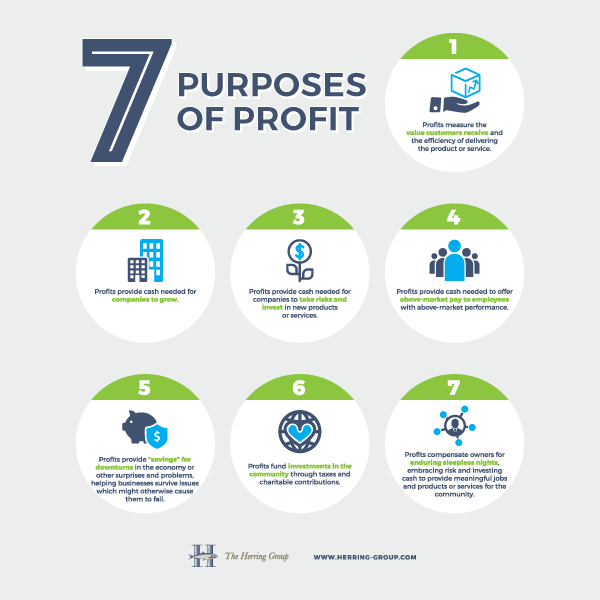Do your employees feel that profits are good?
In a previous post, I explained how most Americans believe that companies make too much profit and how this belief can hurt your company’s growth and profit. Hopefully, you had a chance to speak to some of your employees about their views of profit.
This week, I want to explain how to educate your employees about the critical importance of profits to a business. As you change your employees’ mindset about profits, you will reduce their guilt and help them to optimize your business’ profits.
In this education process, we are going to build on Americans’ overall favorable view of business that I also quoted last week. Specifically, we will explain the “goodness” of profit.
Seven Purposes of Profits
- Profits measure the value customers receive and the efficiency in delivering the product or service to them.
- Profits provide cash needed for companies to grow. Growth requires new equipment, new employees, and more accounts receivables and inventory.
- Profits provide cash needed for companies to take risks and invest in new initiatives, new services or new products.
- Profits provide cash for incentives to offer above-market pay to employees with above-market performance.
- Profits provide “savings” for downturns in the economy or other surprises and problems that businesses have. This savings helps businesses survive issues which might otherwise cause businesses to fail.
- Profits fund investments in the community through taxes and charitable contributions.
- Profits compensate owners for enduring sleepless nights, embracing risk, and investing cash to create and grow businesses, providing meaningful jobs and goods or services to the community.
It’s good to remind ourselves and our employees of the basics – like the purpose of profit. Some of the items above may seem obvious and some might be new.
I want to explain two of the purposes in more detail.
The first purpose above may not seem obvious. It has two components: the value produced for your customers and your efficiency in delivering results. I think of it as one of the “scorecards” for how a business is performing.
The value that you produce is often not what you think. If you are in the landscaping business, you are not producing “mowed grass,” sprinklers that work or mulched beds. You are producing beauty which may make an office building more attractive – perhaps not raising rents, but perhaps reducing vacancies and improving renewal rates. If this beauty can be produced for the property manager on a “hassle-free” basis, then you produce even more value. As you recognize and communicate the full value that you produce, you have opportunity to set prices based on the higher value.
Efficiency in producing results is focused on your costs, generally people, materials and overhead. More specifically, it is focused on how your business works to deliver your goods and services efficiently. There is great room here to distinguish yourself from your competition and gain higher profits through lower costs. For service businesses, efficiency is usually achieved through better leadership, reporting and standardized practices.
The scorecard is your profit – the difference between what you charge for the value you produce for your customers and what it costs you to provide that value. This is where it can be so easy to show employees how profits are good.
The seventh and last purpose above is one where employees might understand the words without being able to personalize the concept. In other words, they don’t “get it” fully. In these situations, I like to explain the concept using their personal circumstances.
When employees invest their hard-earned money in the stock market through a 401k plan, they become “owners.” Stockholders are owners. No doubt they expect the value of their investment will increase over time. But perhaps they do not understand the reasons behind their expectations.
You can ask them:
- Do you expect the value of your investment to increase? (Yes)
- Why is it fair and just for your investment to increase in value? (Compensate for the time value of money and the risk.)
- What must occur for your investment to increase in value? (Profits must grow.)
If they do not have a 401k account, you can also use the example of lending money and whether they should receive interest on a loan. (If they say “no,” then you have just found an ideal source for a loan!)
I hope this information helps you to educate your employees about the importance of profits and help them understand that profits are good for everyone. They no longer have to feel guilty about the company charging a fair price for the value it creates for its customers.
Let me know your thoughts on the Seven Purposes of Profits by reaching out in our contact form.
Educate & Encourage Your Employees
-

Seven Purposes of Profit – 16×20 Printed Poster
$37.00 Inspire your team! Every day your team walks past that spot where they see the same old boring
Read more -

Seven Purposes of Profit – Digital Poster
$17.00 Inspire your team! Every day your team walks past that spot where they see the same old boring
Read more



